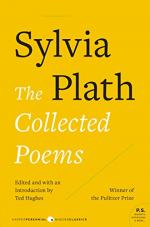|
This section contains 778 words (approx. 2 pages at 400 words per page) |

|
Point of View
“Tulips” is written from a first-person singular perspective. This reliance on first-person singular fits into the poem’s genre, confessional poetry, which is focused on the subjective experience of the author. Readers receive an intimate account of Plath’s feelings while recovering in the hospital, even learning, for example, about what some have suggested is Plath's own suicidal ideation – her admiration for the “peacefulness” that “the dead close on” (32-34). This perspective has led many to equate the speaker of the poem with Plath herself, or with a version of the poet that she created from personal experience.
The use of first-person also contributes to the complex and paradoxical process of self-negation Plath pursues in the first half of “Tulips.” In active voice, Plath often pairs first-person with words or phrases suggesting loss, emptying, and negation – “I am nobody,” “I have nothing to do with...
|
This section contains 778 words (approx. 2 pages at 400 words per page) |

|




